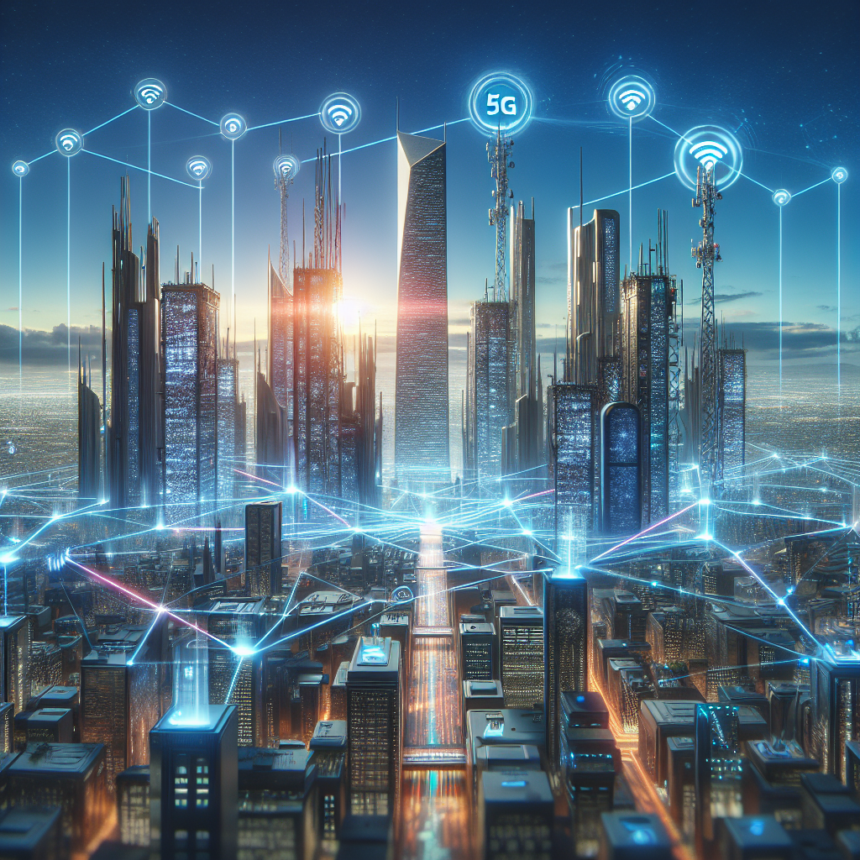The Future of Connectivity: How 5G is Reshaping the Tech Landscape
In a world increasingly dependent on digital connectivity, the advent of 5G technology is paving the way for unprecedented advancements across various sectors. With its higher speed, lower latency, and increased capacity compared to its predecessors, 5G is poised to reshape the tech landscape fundamentally. The implications of this new technology extend beyond improved mobile phone networks; they impact entire industries, as well as everyday human interactions with technology.
One of the most significant benefits of 5G is its remarkable speed. 5G networks can deliver speeds up to 100 times faster than 4G. This means that downloading large files, streaming high-definition video, and participating in video calls can occur with minimal delays, enhancing the user experience manifold. For instance, a 4K movie that might take an hour to download on a 4G network can be downloaded in mere seconds over 5G. Such speed has far-reaching effects not just for consumers but also for businesses; it allows them to share and process data more efficiently.
Another critical advantage of 5G is its ability to support a larger number of devices. The Internet of Things (IoT) has already begun to transform homes and industries, and 5G is the catalyst that will elevate this trend. Smart devices—from wearables to home automation systems—will benefit immensely from the enhanced capacity of 5G networks. With the ability to connect millions of devices per square kilometer, cities can implement smart traffic systems, enhance public transportation, optimize energy consumption, and improve overall urban planning.
Moreover, 5G’s exceptionally low latency—defined as the time it takes for data to travel from its source to its destination—enables real-time communication and transactions. This is especially crucial in fields like healthcare, where remote surgeries and telemedicine applications are becoming commonplace. Surgeons can perform operations on patients miles away using robotic systems, which requires seamless interaction between the doctor and machinery. Similarly, in industries like manufacturing and logistics, real-time data analysis powered by 5G can make production chains more efficient, reducing downtime and operational costs.
In the realm of entertainment, 5G will revolutionize how we consume content. Virtual reality (VR) and augmented reality (AR) applications, which require robust data transfer rates and low latency for optimal performance, will flourish with the introduction of 5G. Gamers can look forward to immersive experiences without the frustration of lag, while AR can transform shopping experiences by allowing consumers to visualize products in their real-life context before making a purchase.
Despite its numerous benefits, the rollout of 5G does come with challenges, including concerns related to infrastructure requirements, regulatory issues, and public health perceptions. However, as governments and companies collaborate to overcome these obstacles, the future looks bright for 5G technology.
FAQs
1. What is 5G technology?
5G, or fifth-generation technology, is the latest mobile network standard that offers significantly faster speeds, lower latency, and higher capacity than 4G networks.
2. What are the main advantages of 5G?
The main advantages of 5G include faster data transfer speeds, reduced latency, increased connection density, and the ability to support more devices simultaneously.
3. How will 5G impact the Internet of Things (IoT)?
5G will enhance the IoT by allowing for seamless connectivity of millions of devices, improving smart home systems, smart cities, and industrial applications.
4. What industries will benefit from 5G?
Industries such as healthcare, manufacturing, automotive, entertainment, and logistics are expected to see significant improvements in efficiency and innovation.
5. Are there health concerns associated with 5G?
While some concerns exist regarding electromagnetic radiation, extensive research by health organizations has found no conclusive evidence of adverse health effects caused by 5G technology.
The evolution of connectivity through 5G is not just an upgrade in technology but a transformation in how we live, work, and play. The future promises to be more interconnected than ever.
